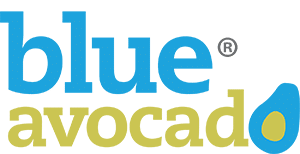What are the best strategies and tips for managing a nonprofit board of directors?
Nonprofit leaders share what they believe are the best ways to successfully manage a nonprofit board of directors with the Blue Avocado community.

Building and managing a strong nonprofit board of directors can be challenging. The success of a nonprofit often hinges on the effectiveness of its board — making it important to implement the best practices and proven strategies for optimal board governance.
When we recently asked the Blue Avocado community: “What is your best advice for successfully managing a nonprofit board of directors?” — and, once again, nonprofit leaders came through!
Here’s a summary of some of the best answers we received:
Enhance board effectiveness through skill development and engagement.
- Make sure your board chair has good facilitation skills
- Educate your board members on major issues impacting your nonprofit
- Help your board members enhance their governing and leadership skills
- Make serving on your board fun, interesting and educational
— Vance Yoshida from Asian Health Services
Relationships drive nonprofit success more than ideas.
Relationships matter. Good ideas die in nonprofits if the relationships aren’t healthy — always. Read that again and reflect on it.
In “for-profit” businesses, good ideas often still win — even if the relationships are poor — because profit motivates people like no other incentive. But in nonprofits, people will intentionally kill a good idea just because they don’t like you.
Most leaders tend toward arrogance when we are young. We have talent, and we know it. We have good ideas, and we know it. This causes us to believe that if we just present the case — and do it skillfully and sometimes even forcefully — our good ideas will prevail. They won’t.
Sure, you may get an idea or two through, but it will take an inordinate amount of effort, energy, and capital.
With wisdom, we eventually learn that forward movement and momentum in the nonprofit world is fully dependent upon our ability to develop healthy relationships. This is true with the board, with staff, with donors, and throughout the community.
— Brian Walton from the Save Our Seabirds
Engage board members with meaningful, passion-driven roles.
Leverage your board members’ unique strengths and passions to drive your organization’s mission forward. Begin your tenure by actively listening — what skills, talents, experiences, and perspectives do they bring? Consider their professional expertise and personal interests, recognizing that engagement is most effective when it aligns with what excites them.
Some board members may wish to apply and refine their professional skills in service to your organization (like an accountant contributing to financial oversight), while others may seek a break from their daily work, preferring to explore new areas of interest.
Thoughtfully connecting each individual to meaningful roles — whether through committee assignments, specialized tasks, or ongoing check-ins — ensures their contributions remain fulfilling and aligned with your strategic objectives. You can create a more engaged, motivated, and impactful board by fostering this alignment.
— Emily Thabes from Beltrami County Historical Society
Invest in board training and orientations for better results.
My advice is to offer regular annual board orientation sessions, not only for new board members, but for returning board members, as well. After all, their roles and responsibilities may have changed.
I also encourage organizations to invest in board development training. I do these and I see a significant change in the relationship between the board and the staff as a result of these sessions.
— Mary Beth Harrington from 501c3 Empowering Nonprofits
Use nominating committees for thoughtful selection of board members.
If you are the executive director, president, or CEO of a nonprofit, managing a board of directors — that has the power to hire and fire you — is a delicate balance.
I relied mostly on my board’s nominating committee, which should screen, evaluate, and interview each and every candidate who gets nominated for the board. This is assuming that you have a current and updated board-nomination process. If you don’t, you need to get one!
Whether you have a small organization, or a larger one who can afford a “hit or miss” board strategy, be very thoughtful about who you bring on your board. A large part of that is to depend on the chair of your nominating committee. Also, check your bylaws to actually see how your nonprofit is supposed to operate.
— Bruce Davis from Arts Council Silicon Valley
Clear policies and abundance build strong boards.
My experience has shown that two factors rise above the rest:
- Having good, clear policies and procedures for board activities (everything from recruiting/onboarding to handling a complaint against the executive director) and;
- An attitude of abundance. Approach every situation with that and you’ll move mountains.
I was recently listening to a story about a board that had been a total mess and was now a small group of five that needs to add four more board members. The person I was talking to was nervous that some of those five would leave because there’s so much work to do.
I asked her to remind the group that they were in a great spot because they’re five caring, committed people with integrity and a desire to do the work. Gone is the dead wood, the infighting, etc. They now have a great foundation to build from.
Good policies and good procedures save time and angst, an abundance framework reveals resources that might otherwise be overlooked.
— Lisa Palermo from Volunteer Hospice of Clallam County
Brief board training boosts understanding and focus at meetings.
In every board meeting, there should be a short segment on ongoing training. It should be relatively short, but to the point, as it relates to one of the important board responsibilities.
As an example, for the next board meeting, we will have 10-15 minutes on risk management. By doing this activity, we provide an important reminder of why we are where we are.
— David Marty
Focus on relationships and bridging board divisions.
Building relationships became the focus of my becoming chair of a board (that does not yet have term limits), split between senior members (some as experienced as 25 years or more) and newer members (new to five years’ experience).
The split is also racially, financially, culturally, and gender divided, furthering the perception of “us versus them.” Not healthy.
I had an individual online meeting or went out to lunch with each of the 15 board members, to get to know them a little bit, hear their concerns, and also ask why they serve on the board.
In return, I conveyed my vision for the organization, my strong support of the staff and executive director, a need for more board engagement in the leadership and activities of the organization, and my foremost desire to foster better communication and eliminate the perception of division as being a negative factor.
Eight months into my chairmanship, being as clear as I can about my position when issues arise, some relationships are stronger, some members have retired, and I’m seeing my agenda as a longer-term, more complicated, more time-consuming endeavor than I had hoped.
— Eugenia Kim from The Writer’s Center
Foster cohesion and clarity between the board and CEO.
As a consultant to nonprofit boards, my job is to serve as a trusted advisor to align the board and chief executive/executive director in directing the organization with clarity, harmony, and an orientation towards results.
It is important to stay neutral in the midst of interpersonal dynamics and maintain cohesion between all parties.
— Michael Lewis from Arbor Consulting NP
Inform, equip, and guide boards for better results.
I have a few tips that worked for me when I was in leadership roles in the nonprofit world.
Have well-used, and thoughtfully created guiding documents, such as bylaws, policies, strategic plans, values, mission and vision statements, etc.
These help because they keep everyone rowing in the same direction and can help avoid conflict when you can point back to them as your reference.
For example, a board (or staff) member wants to create a new program? If it’s not in the strategic plan, that will help reign in rogue ideas and projects you don’t have capacity for at the moment.
A board member hasn’t attended three meetings in a row, or hasn’t responded to anything that’s been sent by email? If you have a policy that addresses this, then the practice is to automatically add that to the next board meeting agenda to decide how to rectify this situation, perhaps a conversation from the chair, perhaps removal from the board, perhaps a leave from the board while they tend to whatever is temporarily eating up their time.
Make sure board members have access to everything they will need, without having to dig around for it.
This can mean a binder, or this can mean a OneDrive or Google Docs link that is referenced in every single email from the executive director to the board — so they always know where to find the link.
This location should include all meeting agendas and minutes, financial statements, budgets, policies, procedures, bylaws, board reports, program reports, annual reports, a list of all board members, their positions and contacts (I have been on boards where I did not know who was on the executive and didn’t know where to find the information, so could not contact them about an issue), and any other relevant information.
Make sure your board is informed.
Once a month, send out a super-quick email (it does not have to be fancy) with information that you wouldn’t always include in the next board report.
These could include tidbits of information to keep them connected to the day-to-day work, such as positive feedback from a client or parent, an interesting phone call you had that week, funding you were successful in receiving, a particularly large donation that came in, a positive story about a staff or volunteer, professional or personal, or something the staff had to overcome to achieve a particular goal to keep the reality of the work in check
For example: “After days of unplugging and plugging the printer back in, calling Xerox multiple times, re-installing the firmware, and trying new paper, we finally convinced it to print our annual report so it will be ready for the AGM on Saturday!”
On the topic of keeping your board informed, NEVER make assumptions about your board’s knowledge, skills, or experience.
I once worked for an organization where a long-term board member finally admitted they had no idea how to read financial statements, and did not know where our funding came from for particular programs.
It’s a good idea every couple of years to do a deep dive into your financials with the board to ensure they are fully informed about how to read the financials; all your sources of income; if there are gaps, what they are and what the plan is to cover them; the diversity mix of the income; and that challenges and opportunities in each income source (for example, grants take a long time to put together, and we only receive 1/3 of the grant dollars we request, making our ROI for grants quite low).
Get the board involved in producing every yearly fund development plan, so they are well versed in the financial situation of the organization.
— Amy MacKinnon from Northern Alberta Business Incubator
Partner with chairs, use strengths, and recognize donors.
Recruit board chairs that can partner with you to motivate and hold the board accountable to expectations.
Work within a strength-finders model to leverage the particular skills and passions of each board member.
Engage them in the “romancing” and recognition of donors, not just the asking — some people are not good solicitors, and you can waste a lot of time trying to make them be something they are not.
— Monica Grant from Monica Grant Consulting
Clear rules, strong chairs, skills, and passion-driven boards.
There are several key pieces that are critical for successfully managing a board of directors:
- Clear expectations and guidelines.
- A board chair that holds directors to high expectations.
- A strengths-based approach: Finding board members with particular skill sets and encouraging them to use them.
- Passion! Board members need inspiration, so be sure to share stories and/or find ways for them to touch the work of the organization.
— Jeane Spada-Allgood from LEAD with Horses
Understand, clarify, respect, and celebrate board members.
Connect with board members as individuals: Understand where they think they can add value and include them in those opportunities.
Be clear about staff vs. board roles: In a small organization, where staff are regularly close to the board, this is particularly important. Know that board members are volunteers and have a full life, have patience and provide structure when you can.
When someone isn’t contributing because of lack of time, it is OK to gently give them permission to leave: The work isn’t meant to be a burden to them.
Celebrate them during and upon completion of service: Mary’s Pence proclaims all past board members as staff, as our wise women, our cloud of witnesses.
— Katherine Wojtan from Mary’s Pence
Connect with your board members.
Relationship building! Get to know your board members more than just in the meetings.
— Jonette Spurlock from Center For Siouxland
Communicate, review, encourage, and train for effective boards.
Communicate clearly the objectives of serving on a board of directors, the responsibilities, and requirements according to the bylaws. Continually review the mission statement to prevent mission drift.
Encourage input and communication from the board members, and be respectful and open-minded to new ideas. Conduct a board of directors’ retreat every two years to review the objectives and mission of the organization and to provide training on how a board can work effectively.
— Susan Cherne from FARM STEW International
Define roles, understand them, and communicate clearly.
Defining roles and understanding roles. From the moment a person joins a board, there is a definition of a role, which may be a description in the bylaws. However, when interacting with board members through committee or in meetings, a new role may arise.
Having excellent communication skills, emotional intelligence, and/or self-awareness is key to understanding if you were assigned a role or are you taking a role. A big difference.
— Kaine Nicholas
Co-leadership, not management, builds strong board-CEO partnerships.
No organization’s board of directors likes the idea of being managed by staff. And that’s reasonable; after all, they’re the ones who are ultimately responsible for the entire nonprofit’s success or failure.
So what if we embraced the idea of co-leading the organization — the board and the executive director/CEO together?
A model that feels more like a partnership between skilled and passionate people who have different roles is more likely to be successful. That kind of partnership has been key to our success at The Arc – Jefferson, Clear Creek & Gilpin Counties.
Do I report to the board? Absolutely.
— Lori Ropa from The Arc – Jefferson, Clear Creek & Gilpin Counties
Thoughtful selection and onboarding create strong boards.
It is key to go through thoughtful selection of new board members based on their passion for the mission, their ability to collaborate and innovate with other board members, and their ability to fill gaps identified through a rigorous up-front analysis of current board needs and identified gaps with the skills and experience of the existing board.
The other key step is to properly orient board members so they feel comfortable in the requirements of the role and understand how they can directly add value to the organization, and quickly get them engaged in specific activities to reinforce that.
A structured onboarding process and the use of assigned mentors to guide, support, and encourage new members can be a very successful approach.
— John Lamirande from Parentis Foundation
Clear expectations build trust and ensure board commitments.
The most important thing to managing any relationship is to be clear on expectations. For boards, this means that, after any communication with any board member, everyone involved is crystal clear on who has committed to doing what, on what timeline.
Not only does this help ensure commitments are actually met, it builds a perception that you’re on top of things and know what you’re doing, which makes directors more inclined to trust and respect your day-to-day decisions, and extend grace when requested.
— Kim Stiens from Employ America
Regular, informal communication keeps boards engaged between meetings.
Communication in between meetings, whether it’s a group text or emails, for example.
I find that sharing announcements or quick updates in between meetings helps board members stay connected with the organization and provides opportunities for interaction.
— JB Jane Borochoff from Westside Regional Center
Partnership, clarity, tools, and training create effective nonprofit boards.
Establish the philosophy that the board chair and the CEO are partners. The board chair manages the board and the CEO manages staff. It is important that these “swim lanes” are maintained. Of course, the CEO provides suggestions, establishes reporting rhythms, and assists the board chair as requested.
Some “tools” to help guide the board with its responsibilities are current bylaws; committee charters and work plans; at least quarterly scorecards reflecting progress towards the annual and strategic plan goals; a dedicated platform for maintaining documents (SharePoint, Teams, etc.)
Detailed onboarding for new board members and then continuing board development and training helps keep the board current with their duties and responsibilities.
We also create playbooks for the board. Having a mission moment at each board and committee meeting reminds the board members why they volunteer their time, talents, and treasures.
— Dr. Michael Wirth-Davis from Goodwill-Easter Seals Minnesota
Clarify expectations early to avoid board misunderstandings.
Get clarity on and acceptance for expectations. Have that conversation in the recruiting phase of your relationship.
Skipping that step can contribute to a misunderstanding around a board member not meeting expectations.
— Hardy Smith from Hardy Smith Consulting
Personal connections and strategic recruitment create strong nonprofit boards.
The best advice for successfully managing a nonprofit board of directors is to build relationships with each member beyond the boardroom.
Having managed a 21-member board for 15 years and currently serving on five boards — two fundraising boards and three where I distribute funds — I’ve learned that strong relationships are the key to effective board leadership. Here’s what works:
1. Prioritize one-on-one relationships.
Meet with your board chair monthly for a standing lunch meeting. Use this time to discuss the good, the bad, and the challenges ahead. This consistent communication fosters a partnership built on trust.
2. Identify and nurture board champions.
Find two or three board members who are well-respected and aligned with your vision. These champions can serve as your mouthpiece, helping to introduce and advocate for change. I always relied on my board champions to be the ones speaking up in meetings, sharing insights from conferences, and reinforcing key initiatives. Weekly check-ins, whether over lunch or a quick call, help strengthen these relationships.
3. Engage with other board members.
For the rest of the board, make the effort to stop by their office at least twice a year. A simple check-in outside of formal meetings keeps communication open and builds goodwill.
4. Be proactive in board recruitment.
The best way to avoid conflicts is to recruit strategically. A well-thought-out selection process ensures that you bring on board members who are not only passionate about the mission, but also a good fit for the organization’s culture and dynamics.
By taking these steps, you create a culture of trust, collaboration, and engagement, leading to a highly functional and supportive board. In all my years managing boards, this approach helped me avoid major issues and drive meaningful impact.
— Sabrina Walker Hernandez from Building Better Boards (consulting)
Note: The opinions and product/service recommendations expressed above are solely those of the participants and do not necessarily represent those of Blue Avocado. Submissions may be edited for length and clarity.
Your Voice Matters!
Help other nonprofits grow by sharing your knowledge and insights with a chance to be featured in the next Ask the Blue Avocado Community results.
You might also like:
- What is your nonprofit’s approach to planning for leadership succession?
- How can nonprofits better collaborate and share resources with each other?
- What area of your nonprofit has benefited the most from having a specialist on your team?
- What has been a “happy accident” that ended up benefitting your nonprofit?
- What do nonprofits struggle with the most?
You made it to the end! Please share this article!
Let’s help other nonprofit leaders succeed! Consider sharing this article with your friends and colleagues via email or social media.
About the Author
Blue Avocado is an online magazine fueled by a monthly newsletter designed to provide practical, tactical tips and tools to nonprofit leaders. A small but mighty team of committed social sector leaders produces the publication, enlisting content from a wide range of practitioners, funders, and experts.
Articles on Blue Avocado do not provide legal representation or legal advice and should not be used as a substitute for advice or legal counsel. Blue Avocado provides space for the nonprofit sector to express new ideas. The opinions and views expressed in this article are solely those of the authors. They do not purport to reflect or imply the opinions or views of Blue Avocado, its publisher, or affiliated organizations. Blue Avocado, its publisher, and affiliated organizations are not liable for website visitors’ use of the content on Blue Avocado nor for visitors’ decisions about using the Blue Avocado website.







